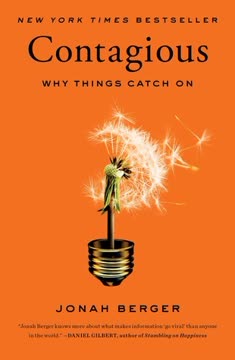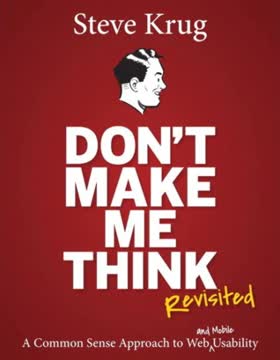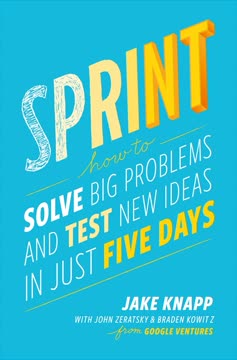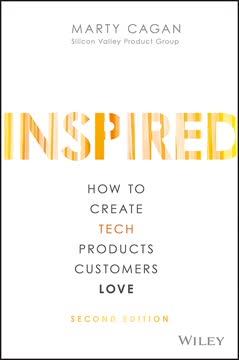つの重要なポイント
1. フックモデル:習慣形成プロダクトの構築フレームワーク
習慣形成技術は、私たちの日常生活を支える見えないエンジンである。
フックモデルは、トリガー、アクション、変動報酬、投資の4つのフェーズで構成されている。このサイクルを繰り返すことで、強力なユーザー習慣が形成される。Facebook、Twitter、Pinterestなどの企業は、このモデルを成功裏に実装し、ユーザーが頻繁に、かつ自発的に関与するプロダクトを作り上げている。
主要な構成要素:
- トリガー: 行動の起動装置
- アクション: 報酬を期待して行う最も簡単な行動
- 変動報酬: ユーザーのニーズを満たしつつ、さらに欲求を引き起こす
- 投資: ユーザーがシステムに価値を投入し、再利用の可能性を高める
これらのフェーズを理解し実装することで、プロダクトデザイナーはユーザーの問題や欲求に合致した体験を作り出し、自動的な行動とエンゲージメントの向上を実現できる。
2. トリガー: ユーザー行動を引き起こす火花
外部トリガーには情報が埋め込まれており、ユーザーに次に何をすべきかを伝える。
トリガーには2種類ある: 外部トリガーと内部トリガー。外部トリガーは、メール、アプリアイコン、通知などの環境的な合図である。内部トリガーは自動的に心に現れ、しばしば退屈、恐怖、優柔不断などのネガティブな感情である。
効果的なトリガー:
- タイミングが良く、実行可能である
- 即時的かつ長期的なエンゲージメントを引き起こす
- 時間と共にユーザーを外部トリガーから内部トリガーへと移行させる
習慣形成プロダクトを作るためには、デザイナーはユーザーの内部トリガーを理解し、外部トリガーを使って初期のエンゲージメントを促す必要がある。ユーザーがプロダクトと繰り返し関与することで、プロダクトと内部ニーズの間に関連性が形成され、最終的には自動的な行動に繋がる。
3. アクション: 報酬への道を簡素化する
行動の発生確率を高めるために、フォッグはデザイナーにその瞬間のユーザーの最も希少なリソースを基にシンプルさに焦点を当てるよう指示している。
シンプルさが鍵であり、ユーザー行動を促進する。行動が簡単であればあるほど、ユーザーはそれを実行しやすくなる。このフェーズはフォッグ行動モデルに基づいており、行動が発生するためには、動機、能力、トリガーの3つの要素が収束する必要がある。
能力を高めるために:
- 必要な時間を減らす
- 金銭的コストを減らす
- 物理的な努力を最小限にする
- 認知負荷を軽減する
- 社会的規範に合わせる
- 行動を非日常的にする
Google、Twitter、Instagramなどの成功したプロダクトは、ユーザー行動の簡素化に長けている。障害を取り除き、望ましい行動を実行しやすくすることで、これらの企業はユーザーエンゲージメントを高め、強力な習慣を形成している。
4. 変動報酬: ユーザーを引きつけ続ける予測不可能なスリル
変動報酬は、ユーザーを引きつけるために企業が実装する最も強力なツールの一つである。
変動性の力は、ユーザーのエンゲージメントと動機を高める能力にある。報酬が予測不可能であると、集中状態が生まれ、脳のドーパミンシステムが活性化され、判断や理性に関連する領域が抑制される。
3種類の変動報酬:
- トライブ: 他人からの社会的報酬
- ハント: 物質的資源や情報の探索
- セルフ: 熟達や完了の内的報酬
Facebook(トライブ)、Twitter(ハント)、Codecademy(セルフ)などの企業は、これらの報酬タイプを効果的に利用してユーザーを引きつけ続けている。ユーザーのニーズを満たしつつ、さらに欲求を引き起こすことで、変動報酬はプロダクトへの強力な再訪動機を生み出す。
5. 投資: ユーザーの努力がプロダクトの価値を高める
投資フェーズの大きなアイデアは、サービスが使用と個人的な投資によって改善されるというユーザーの理解を活用することである。
投資フェーズは、長期的なエンゲージメントを創出するために重要である。ユーザーがシステムに価値を投入することで、再利用の可能性が高まる。このフェーズは、サンクコストの誤謬や保有効果などの心理学的原則を活用している。
投資の形態:
- 時間
- データ
- 努力
- 社会的資本
- 金銭
投資は、将来の利用のためにサービスを改善したり、ユーザーにプラットフォームに「価値を保存」させたり、さらなる投資を促したりする。例として、LinkedInのプロフィール完成度、Tinderのスワイプ機能、Snapchatのストリーク機能がある。小さな投資を促すことで、プロダクトは時間と共にユーザーにとってより価値のあるものとなり、継続的なエンゲージメントの可能性が高まる。
6. 習慣形成技術の設計における倫理的考慮
フックモデルは基本的に人々の行動を変えることに関するものであるが、説得力のあるプロダクトを構築する力は慎重に使用されるべきである。
操作マトリックスは、起業家が自分たちの習慣形成プロダクトの倫理性を評価するためのツールである。2つの重要な質問を投げかける: 「自分自身がそのプロダクトを使うか?」と「そのプロダクトがユーザーの生活を実質的に改善するか?」
4種類のクリエイター:
- ファシリテーター: 自分が使い、ユーザーの生活を改善すると信じるプロダクトを作る
- ペドラー: ユーザーの生活を改善すると信じるが、自分では使わないプロダクトを作る
- エンターテイナー: 自分が使うが、必ずしも生活を改善しないプロダクトを作る
- ディーラー: 自分が使わず、生活を改善しないと信じるプロダクトを作る
プロダクトクリエイターは、ファシリテーターを目指し、ユーザーの生活を真に改善するプロダクトを作りつつ、潜在的なネガティブな影響に注意を払うべきである。このアプローチは、倫理的な考慮に合致するだけでなく、長期的な成功の可能性も高める。
7. 習慣形成プロダクトの機会を見つける
新しい技術が突然行動を容易にする場所では、新しい可能性が生まれる。
イノベーションの機会は、技術の進歩、ユーザー行動の変化、インターフェースデザインの変化からしばしば生じる。これらの機会を見つけることで、起業家は実際のユーザーニーズを解決し、持続的な習慣を形成するプロダクトを作り出すことができる。
探求すべき領域:
- 新興行動: 主流になる可能性のある早期採用パターン
- 可能にする技術: 特定の行動を容易にする新しいインフラ
- インターフェースの変化: ユーザーが技術と対話する方法の変化
例として、スマートフォンの普及によりモバイルファーストのプロダクトが生まれ、ソーシャルメディアプラットフォームがユーザー生成コンテンツを活用し、ウェアラブル技術が健康とフィットネスの新しい可能性を創出している。これらの変化に注意を払い続けることで、起業家は習慣形成プロダクトを作り出すためのユニークな機会を見つけることができる。
8. 習慣テストプロセス: ユーザーエンゲージメントの測定と改善
習慣テストは、プロダクトの熱心なユーザーを見つけ、どのプロダクト要素が習慣形成に寄与しているか(もしあれば)を発見し、それらの要素がユーザー行動をどのように変えるかを明らかにする。
習慣テストプロセスは、特定、コード化、修正の3つのステップで構成されている。この反復的なアプローチは、プロダクトデザイナーがプロダクトの習慣形成の可能性を測定し、改善するのに役立つ。
習慣テストのステップ:
- 特定: 熱心なユーザーが誰であるかを特定する
- コード化: これらの熱心なユーザーが取る行動を理解する
- 修正: より多くのユーザーが同じ道を辿るようにプロダクトを適応させる
考慮すべき主要な指標には、使用頻度、熱心なユーザーの割合、特定の行動パターンが含まれる。ユーザーデータに基づいてプロダクトを継続的にテストし、改良することで、その習慣形成の可能性と全体的な成功を高めることができる。
最終更新日:
FAQ
What's "Hooked: A Guide to Building Habit-Forming Technology" about?
- Author and Purpose: Written by Nir Eyal with Ryan Hoover, the book explores how to create habit-forming products using psychological principles.
- Core Concept: It introduces the Hook Model, a four-step process that companies use to encourage user habits.
- Target Audience: The book is aimed at entrepreneurs, product managers, and designers interested in understanding user behavior.
- Practical Application: It provides actionable insights for building products that people use regularly without relying on expensive marketing.
Why should I read "Hooked: A Guide to Building Habit-Forming Technology"?
- Understand User Behavior: Gain insights into the psychological triggers that drive user engagement and retention.
- Improve Product Design: Learn how to design products that become a natural part of users' routines.
- Competitive Advantage: Discover how habit-forming products can provide a significant edge in crowded markets.
- Ethical Considerations: The book also addresses the moral implications of creating addictive technologies.
What is the Hook Model in "Hooked"?
- Four Phases: The Hook Model consists of Trigger, Action, Variable Reward, and Investment.
- Trigger: Initiates the behavior, can be external (notifications) or internal (emotions).
- Action: The simplest behavior in anticipation of a reward.
- Variable Reward and Investment: Keeps users engaged by offering unpredictable rewards and encouraging them to invest in the product.
What are the key takeaways of "Hooked: A Guide to Building Habit-Forming Technology"?
- Habit Formation: Understand how habits are formed and the role of frequency and perceived utility.
- User Engagement: Learn how to create products that users return to without external prompting.
- Investment Phase: Discover how user investment increases the likelihood of repeated engagement.
- Ethical Design: Consider the moral responsibilities when designing habit-forming products.
How does "Hooked" define a habit?
- Automatic Behavior: Habits are defined as behaviors done with little or no conscious thought.
- Triggered by Cues: They are often triggered by situational cues, either external or internal.
- Engineered Actions: The book explains how products can be designed to become habitual.
- Impact on Behavior: Habits significantly alter everyday behavior as intended by designers.
What are the types of triggers in the Hook Model?
- External Triggers: These include notifications, emails, and app icons that prompt user action.
- Internal Triggers: These are emotions or thoughts that cue behavior without external prompts.
- Transition from External to Internal: Successful products transition users from external to internal triggers.
- Example: A user might initially be prompted by a notification but later use the product out of habit.
What role do variable rewards play in the Hook Model?
- Create Cravings: Variable rewards create a craving that drives users to return.
- Types of Rewards: The book identifies three types: rewards of the tribe (social), hunt (material), and self (intrinsic).
- Unpredictability: The unpredictability of rewards keeps users engaged.
- Example: Social media platforms use likes and comments as variable rewards.
How does the investment phase work in the Hook Model?
- User Effort: Users invest time, data, or effort, increasing the product's value to them.
- Future Rewards: Investments are about anticipating future rewards, not immediate gratification.
- Stored Value: The more users invest, the more valuable the product becomes to them.
- Example: Following someone on Twitter increases the likelihood of returning to the platform.
What are the ethical considerations discussed in "Hooked"?
- Manipulation Concerns: The book addresses the potential for products to become addictive.
- Moral Responsibility: Designers have a responsibility to ensure their products improve users' lives.
- Manipulation Matrix: A tool to assess whether a product is ethical based on its impact and the designer's use.
- Facilitator Role: Encourages creating products that the designer would use and that improve lives.
What are some real-world examples used in "Hooked"?
- Instagram: Used as an example of how external triggers can become internal.
- Pinterest: Demonstrates the use of variable rewards through endless scrolling.
- Twitter: Shows how user investment in followers increases engagement.
- Bible App Case Study: Illustrates the application of the Hook Model in a religious context.
How can I apply the concepts from "Hooked" to my product?
- Identify Triggers: Determine what internal and external triggers will prompt user action.
- Simplify Actions: Make the desired user actions as easy as possible.
- Incorporate Variable Rewards: Use unpredictability to keep users engaged.
- Encourage Investment: Design ways for users to invest in the product, increasing its value to them.
What are the best quotes from "Hooked" and what do they mean?
- "First-to-mind wins": Highlights the importance of being the go-to solution for users.
- "Habits give companies greater flexibility to increase prices": Explains the economic advantage of habit-forming products.
- "If it can’t be used for evil, it’s not a superpower": Discusses the dual nature of habit-forming technology.
- "The Hook Model is fundamentally about changing people’s behaviors": Emphasizes the core purpose of the book's framework.
レビュー
本書『Hooked』は、習慣形成型の製品を構築するための明確なフレームワークが評価され、主に好意的なレビューを受けている。読者は、ユーザーエンゲージメントの背後にある実行可能な洞察と心理学的原則を高く評価している。一部の人々は、本書の長さやユーザーを「フックする」ことの倫理的な側面について批判している。Hookモデルの4つのステップ—トリガー、アクション、変動報酬、投資—は広く議論されている。多くの人々は、製品設計やユーザー行動の理解に役立つと感じているが、一方でその操作の可能性について疑問を持つ人もいる。全体として、本書は起業家やプロダクトマネージャーにとって有用な読み物と見なされているが、そのアプローチに対する一部の懸念も存在している。
Similar Books















